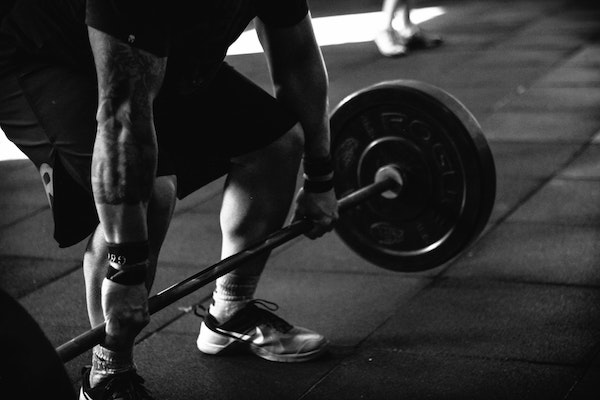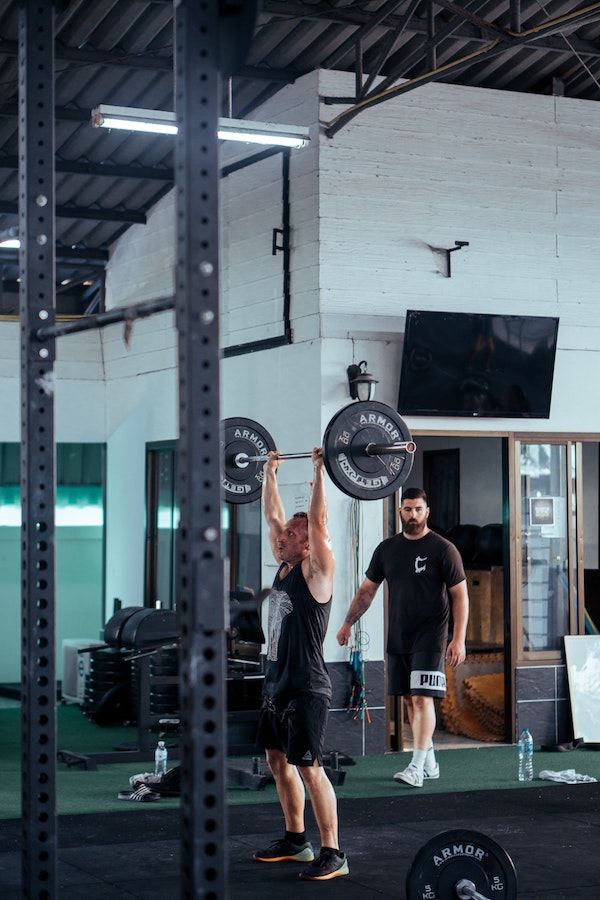
When I first decided I was ready to buckle down and get in shape, I found the options overwhelming.
Should I pick up yoga? Start running? Do HIIT workouts at home? They all had pros and cons.
I ultimately decided to hit the gym and start lifting heavy weights. There were a number of benefits and advantages that intrigued me about it — but there are a few drawbacks as well.
If you’re trying to decide what workout to commit to, you’re in the right place.
In this article, I’ll break down the pros and cons of lifting weights as a way to get in shape (according to science and my personal experience).
Overall, lifting weights is a tremendous way to build muscle, increase strength, and transform the composition of your body. The workouts are challenging and motivating as you push for personal records, so it’s easy to stick to for the long haul.
The downsides? You’ll need access to a gym or equipment to keep lifting, so it’s hard to do on vacation or at home, and it takes time to learn proper form — if you don’t, the risk of injury is high.
Let’s take a closer look at these points.
Pros of Lifting Weights (Benefits)
Any kind of exercise is better than doing nothing at all.
But finding the right workout style for you can be tricky. You might have to try a few things and really take the time to think about your goals.
Here are some reasons I love lifting weights, and some benefits that make it worth trying.
1. Builds Muscle & Strength
This is the number one and most obvious advantage of lifting weights in the gym, and it’s a biggie.
From a purely aesthetic standpoint, few things can rival dedicated weight training.
You know those rippling biceps you’ve been coveting? Yeah, you won’t get them by running or hitting the elliptical.
The best way to add muscle to your frame (and serious strength) is by training with weights and using the principles of progressive overload.
Progressive overload just means lifting more weight and/or more reps over time, increasing your performance and forcing your muscles to grow and adapt.
It’s possible but much harder to build muscle with other styles of workouts (with the exception of maybe bodyweight training) because progressive overload can be difficult to achieve.
2. Inherently Motivating
I love the measurability of lifting weights.
There’s no grey area about your performance here: You either lifted the weight or you couldn’t.
I track everything — every weight, every set, every rep — and push for new personal records often.
Getting noticeably stronger and seeing your muscles and body change is a rush and gives you quite a sense of achievement.
The goal of every style of workout should be to improve — you shave time off of your run, increase your endurance, etc. But there’s something about the raw numbers of weight lifting that keeps me going year in and year out.
3. Increases Metabolism

When you add muscle to your frame, or swap fat for muscle, you’ll naturally increase your body’s metabolic rate and caloric needs.
Simply put, as you progress in your weightlifting journey, your body starts CHEWING through calories.
The reason? Muscle burns more calories than fat. It’s as simple as that.
This process helps you burn fat or stay lean easier.
There’s also some evidence that your body’s metabolic rate remains elevated for longer after a strength workout (the “afterburn”) than it does after other forms of exercise.
So a heavy lifting session can pay dividends for the rest of the day.
4. Boosts Bone Health
The stress of lifting heavy loads (when done properly) challenges your bones and can lead to increased bone density.
Strong bones come in handy as you age and can help prevent bone diseases like osteoporosis.
As we get older, we tend to lose bone mass — which makes us more brittle and prone to injuries like breaks and fractures.
An investment in strength training earlier in life can help prevent some of these issues later on.
5. Weight Lifting Is (Usually) Low Impact
Take it as simple anecdote, but most people I know who run a lot (a notoriously high impact exercise) have chronic problems with their feet, ankles, and knees.
That brutal pounding of feet on pavement over and over again can wear your body down over time, especially when proper precautions aren’t taken.
Lifting weights often won’t cause these problems. While moving heavy loads places a lot of stress on your muscles and bones, the “impact” is relatively low. If you use proper form and lift weights you can handle, you most likely won’t develop joint pain and other injuries.
Weight lifting is also great for strengthening your body’s connective tissue and keeping you injury-free.
Cons of Lifting Weights (Disadvantages)
As much as I love it, lifting weights isn’t “perfect” by any means.
There are some drawbacks that might make it a less than ideal fit for some people looking to get in shape.
Here are just a few:
1. Learning Curve & Safety
All things considered, lifting weights is pretty safe. And, again, most movements are relatively low-impact on your bones and joints.
However, you need to know what you’re doing if you want to stay safe lifting heavy weights.
Proper form is crucial and can be really easy to screw up when you’re a beginner.
It can also be tricky pushing to get stronger and lift heavier weights without biting off more than you can chew.
Bad form and weights that are too heavy are great ways to get injured, and it can be tough for beginners to know when they’re walking the line.
2. Can Encourage Unhealthy Eating Habits
Bulking and cutting cycles (or efforts to add muscle mass and lose fat, respectively) can be great for your body composition.
But in inexperienced hands, they can be detrimental to your health.
The chase for more muscle and new PRs can cause some people to substantially overeat or ignore proper nutrition (in the case of “dirty bulking”).
[If I’m losing you with the lingo, check out my guide to gym slang.]
Following extreme crash diets to lose fat and get “shredded” can also have adverse effects.
3. Not a Conditioning Workout
Lifting weights works wonders for your strength, muscle mass, bone health, and longevity.
However, it’s not the only workout you should ever do.
(Yes, you should do cardio while bulking.)
Heavy lifting won’t do much for your conditioning and cardiovascular endurance, and it might leave you feeling stiff and immobile.
Proper recovery is key to keeping your muscles healthy, and lifting is no substitute for stretching and other forms of flexibility training.
4. Needs Special Equipment
The biggest drawback, in my mind, to lifting weights is that it can only really be done in a gym setting.
Unless you have a killer home gym, that is.
It’s just hard to replicate the experience of lifting with barbells and Olympic weights at home, on vacation, or at a hotel when you don’t have the equipment you need.
In contrast, you can run anywhere — outside, inside, on a treadmill, etc. And bodyweight HIIT work can be done in your living room or in a hotel room just as easily as a workout studio.
But you can only really train your bench press in a proper gym, which can make lifting a little inconvenient at times.
Wrapping Up
All in all, I think lifting weights is a fantastic way to get in shape — it’s the main focus of my own training, in fact.
The benefits far outweight the negatives, including:
- Great for building muscle, dropping fat, and improving overall body composition
- Extremely motivating over the long haul
- Boosts your metabolism and encourages your body to “fire on all cylinders”
- Good for longevity and bone health’
On the downside, you’ll need to be careful about form and how much weight you lift — otherwise you could risk an injury.
Lifting isn’t for everyone, but that’s OK, because it’s not the only option.
Check out my workout reviews to see what I think about taking a spin class, boot camp, or using a home fitness app to get in shape.